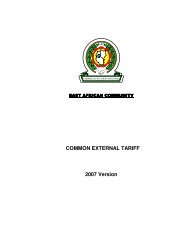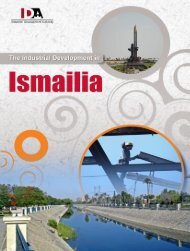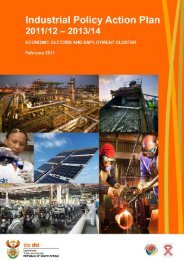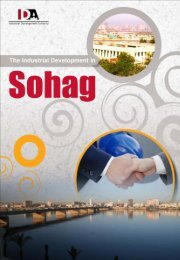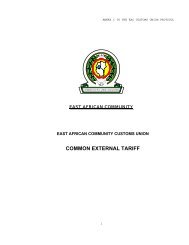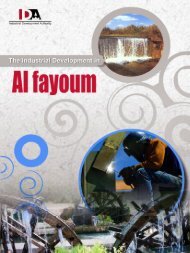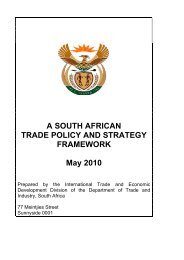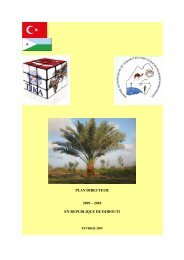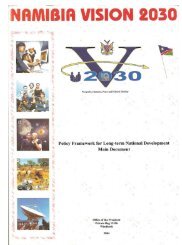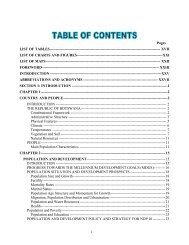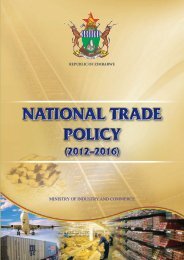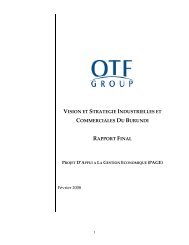rwanda national export strategy - minicom
rwanda national export strategy - minicom
rwanda national export strategy - minicom
You also want an ePaper? Increase the reach of your titles
YUMPU automatically turns print PDFs into web optimized ePapers that Google loves.
RWANDA NATIONAL EXPORT STRATEGY<br />
financing schemes targeting key sectors in order to drive <strong>export</strong> growth. Rwanda will borrow from best<br />
practices of countries including Mauritius, Malaysia, South Africa, South Korea and China.<br />
4.2.6 INFRASTRUCTURE<br />
Energy cost is a major impediment to the Rwandan industrial sector. Biomass, such as wood, charcoal<br />
and peat accounts for 85% of Rwanda‘s energy supply. The remaining share of energy is from petroleum<br />
(11%), and electricity (3%). 35 Rwanda has an installed 95.24 Megawatts (MW) of electricity capacity,<br />
whereas the available capacity currently stands at 84.85 MW. Rwanda has low per capita electricity<br />
consumption relative to the East Africa Community: only 13% of the population has access to electricity,<br />
and there are reported power outages. Electricity generation cost is high and the feed in tariff of power is<br />
high with 112 RWF/kWh for households and RWF 102/kWh for industries, despite GoR subsidizing the<br />
utility. Rwanda‘s electricity cost at $0.24/Kwh or 24 US c/Kwh is at least double that of its neighbours.<br />
64% of businesses surveyed in the 2008 Business Investment Climate Survey cited access and cost of<br />
electricity as a major constraint.<br />
However, there is a high commitment of the GoR to boost the power sector to serve as an engine for<br />
socio-economic development. A Power Sector Steering Committee chaired by the Prime Minister has<br />
been put in place and an inter-ministerial taskforce is in place to assist the Ministry of Infrastructure to<br />
implement the 7 year electricity development program, with the aim to have a cumulative installed<br />
capacity of 1000 MW and access rate of 50% by 2017.<br />
Rwandan investor surveys continually list transport as a major constraint, due in part to the poor quality<br />
of roads. Further, the majority of road investment is focused on already paved <strong>national</strong> roads, while<br />
neglecting district feeder roads. The government has budgeted RWF 65 billion for road repairs and for the<br />
development of rural feeder roads. USAID is examining feeder road programs, but more is required. High<br />
vehicle operating costs are also a problem.<br />
Priority Issues and Challenges<br />
Issue #1 A more consistent and widespread energy supply is needed. It is estimated that 13% of<br />
Rwanda‘s population is connected to the energy grid, with a goal to reach 16% by 2013 and 50% by<br />
2017. 55% of businesses surveyed in the 2008 BICS survey reported that power outages were a constraint<br />
to growth, with the average business experiencing five power outages per month. Some programs to<br />
address this might include better grid management through state of the art ICT solutions, in addition to<br />
adding MW capacity. GoR has significantly invested in the energy sector in order to increase supply and<br />
reduce cost and estimates that the cost of energy will drastically reduce within the next 3 years.<br />
Issue #2 Energy supply needs to be provided at a lower cost in order to compete inter<strong>national</strong>ly.<br />
Sufficient supply and efficient use of energy are important factors for economic development. Moreover<br />
energy resources are limited and dependency on imported energy such as petroleum products is rising.<br />
Energy costs almost double that of Kenyan and East African Community costs, and almost three times the<br />
amount for more developed countries.<br />
Issue #3 Roads in Rwanda need ongoing maintenance and upgrading. According to the Business<br />
Investment Climate Survey, transport makes up 15% of total monthly costs, and up to 25% for micro<br />
firms. Transport costs are particularly high in Rwanda due to the poor rural road quality, vehicle costs and<br />
high insurance premiums. With its mountainous terrain and associated rainfall erosion, severe strains have<br />
been placed on the country‘s road network – for which the maintenance cost is twice as high as that of<br />
most Sub-Saharan countries.<br />
Issue #4 Air, rail and water (Lake Kivu), need to be developed further in order to reduce the<br />
overall costs of transport. Air transport is too expensive for sectors such as horticulture, and more<br />
momentum for the railroad is required, to reduce Rwanda‘s transport costs to the Indian Ocean.<br />
35 NISR – In constant 2006 prices.<br />
Page 24



